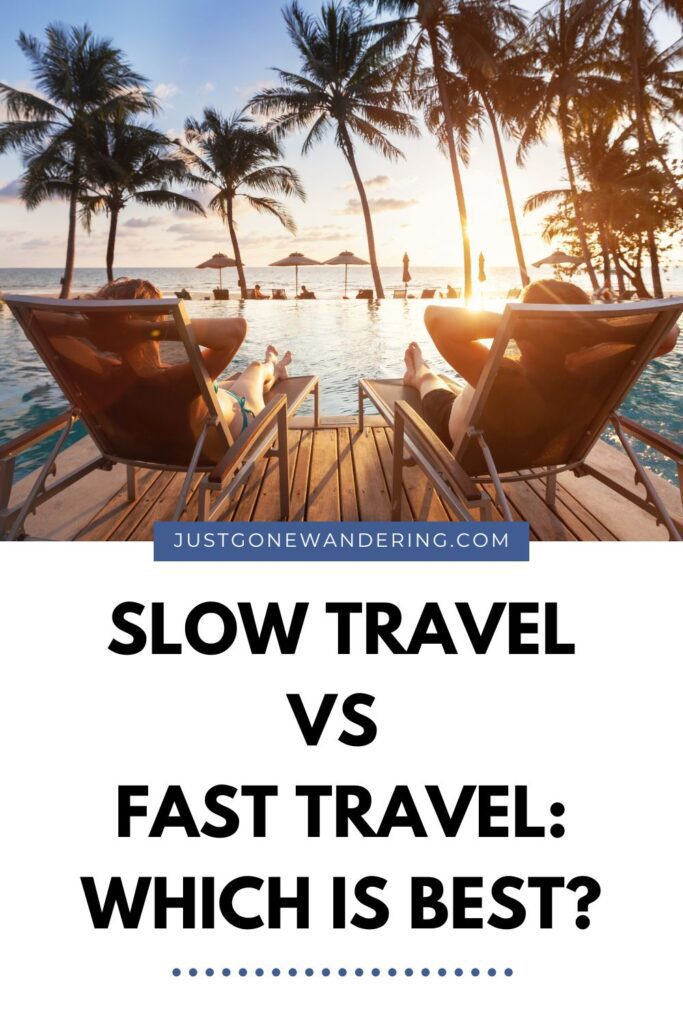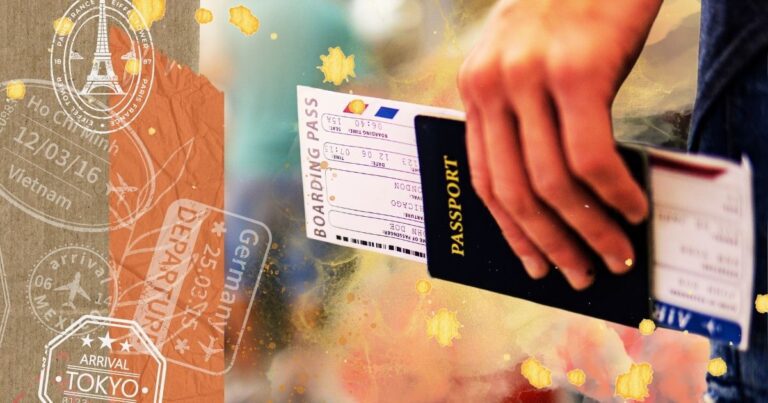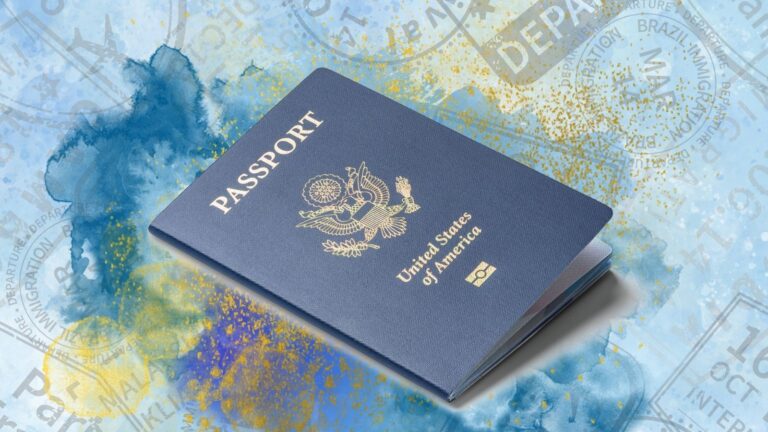What is Slow Travel?
“Slow travel” has become a bit of a buzzword in the last few years, and I’ve been seeing a lot of discussions around what it is, why someone would want to do it, and HOW to slow travel.
As someone who practices slow travel, most especially in the last year, I’m in a good position to explain my point of view! Keep reading…
Just Gone Wandering is supported by readers! This post contains affiliate links. If you click on a link and buy something, I get a small percentage at no extra cost to you. Your support helps keep this blog running— thank you! Read full disclosure here.
Fast, Slow, What?
Okay, so there’s different types of travel styles, right? There’s the type you do when you’re on a two week vacation and just want to chill at the beach (resort travel), there’s going for the weekend to a nearby city (staycation), there’s backpacking, luxury travel, solo travel, etc. etc. Tons of different travel types!
The PACING of those travel styles is either fast or slow.
How specifically you count something as fast really depends on your personality and how you (personally) like to travel.
But in general: fast travel means moving place to place every few days, staying in hotels, and generally acting like someone on a short-term vacation. Even if you’re traveling for 3 months, if you’re moving cities every few days and countries every few weeks, that’s “fast travel.” Usually you’re also flying everywhere because you don’t have time for other modes of transport.
Fast travel is popular with backpackers and other travelers who have a short time frame because you can see more stuff within that window. If you rarely get to travel, and you only have a short amount of time to see things, then it’s typical to want to cram as much as you can while you can.

Slow travel, meanwhile, is staying put in the same city or country for weeks or even MONTHS, usually in an apartment or house, and acting like someone who (temporarily) lives in that specific place. It’s also using public transit and other means of travel besides flying– lots of overnight buses, long train rides, and even ferries and boats.
You might go do day trips and road trips within the same country, but you aren’t packing your stuff and moving from place to place more than once or twice.
Slow travel is very popular with digital nomads, because it’s much easier to work when you have a home base with a kitchen and a steady wifi connection.
My whole 2024 has been about slow travel, basically, as I’ve been renting apartments in one or two cities and staying there for my whole visa length. In 2024, for instance, I stayed in Tokyo for one month, Daito (outside of Osaka) for a month, Kuala Lumpur for two months, and now Da Nang for three months.
It’s given me the opportunity to a) work on my blog a lot and b) explore a specific neighborhood/city more than I could by just visiting a few days. I’ve really enjoyed it, and I feel a lot better than I did last year when I was moving every 3-5 days and kept getting sick!

Benefits of Slow Travel
You don’t have to be a digital nomad to benefit from slow travel style. There’s lots of good reasons why you might want to try it out:
- You save money on transit, because you’re not hopping to the next destination every few days.
- You save money on accommodation, because you can often get major discounts if you stay a month or more in one place. AirBNBs typically give 10-40% discounts on stays over 28 days, for instance.
- You can cook your own meals and save money on groceries, groceries that you can keep in a kitchen and don’t have to throw away before the next move. You can even buy bulk items!
- You have the time to get to know a specific place in a deeper way than just a few tourist destinations.
- You have time to meet locals and make friends with other travelers and expats who are living there, too!
- Because you’re embedded in a place for a longer time, you have more opportunities to make fantastic memories of that place. Buzzing through 3-6 cities in a week is fun, but how much will you really remember? But a week, or four weeks, in a specific place…that’ll give you time to have some experiences.
Basically, the slower you travel the more time you have to see and experience stuff beyond the tourist sights. Usually people travel because they want to see and experience something different than what they get at home. Traveling slowly means you get to see more unique things than someone who, say, blasted through the top 5 things to do in the city in one day and then left. That’s kinda special!
There are some downsides to slow travel, though. Like, sometimes when you stay somewhere for a long time, the shine kind of wears off. What you used to find enchanting you now just find boring, or annoying.
Other times you feel like you’ve “seen everything” and want to move on, but now you’re stuck because you booked this apartment and can’t get out of the lease.
I also think it’s easier to feel homesick when you’re slow traveling, because you’re not being distracted by shiny new things all the time like when you’re fast traveling. That’s why it’s important to try and make friends whenever you land somewhere new, so you can be part of a community.
Are You a Slow Traveler?
Look, I’m not the slow travel police and I won’t come arrest you if you move hostels every couple days.
There’s no moral high ground for being a slow traveler– it’s just a type of travel that people are interested in, because people are interested in doing something other than the normal tourist stuff. Slow travel is a good way to do that.
If you’re interested in living in a local community, shopping at the grocery store and wandering night markets, listening to the neighbors’ karaoke sessions every Friday night, exploring a place deeply over a week or more: then yes, you’re a slow traveler. Yay!
Save to Pinterest


Explore More
More About Slow Travel
- The Reality of Slow Travel by Field and Nest
- What is Slow Travel? How Taking Your Time Makes for the Best Adventures by Poppin’ Smoke
- Slow Travel: Why It’s The Absolute Best Way to Travel by The Spirited Explorer
- The Slow Traveller: An intentional path to mindful adventures (book)
- Slow Travel: Escape the Grind and Explore the World (book)
Nomad Living
- How to Plan a Year of Full-time Travel
- Packing List for Perpetual Travel (Solo Female Cozy Budget Style)
- Backpack vs. Suitcase for Long-Term Travel
- How to keep in contact while traveling abroad
- The BEST WhatsApp Travel Group Chats
- 90+ Active Facebook Groups for Travelers
- Where to Stay Besides Hotels When Traveling Long-Term
- Travel kitchen essentials | Hotel cooking
- Best Resources for Long-Term Travel
Best Travel Resources
- 👩💻Stay organized with the Deluxe Travel Planner Spreadsheet
- 🛌Search Hostelworld for budget stays
- ✈️Search SkyScanner for discounted flights around the world
- 😺Join TrustedHousesitters and do petsitting in exchange for accommodation
- 💳Carry Chase Sapphire Preferred for a travel-friendly credit card
- 📱Use Airalo for eSIMs around the world
- 🚙Check DiscoverCars for international car rentals
- 👩💻Snag ExpressVPN to stay safe while browsing the web
- 🧑⚕️Sign up with VisitorsCoverage for trip insurance







